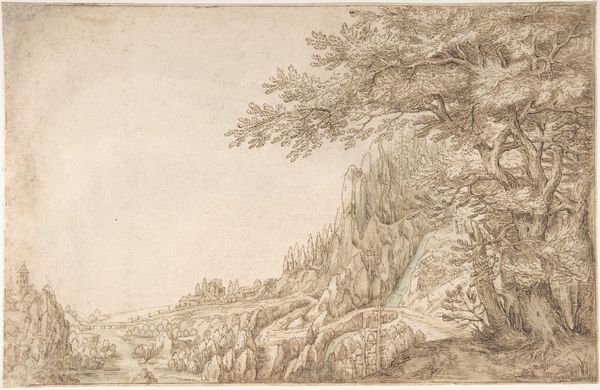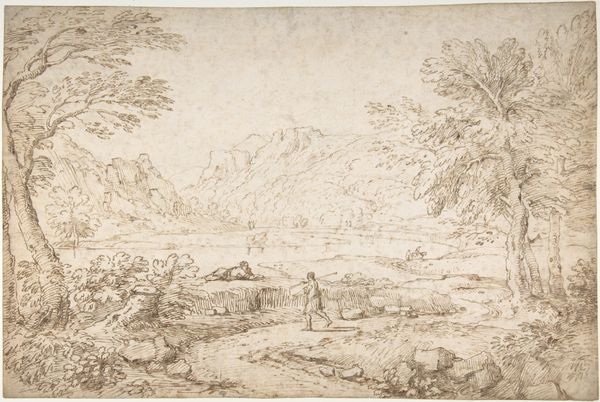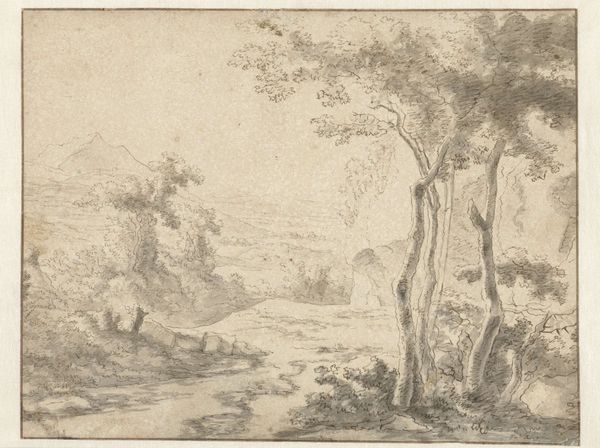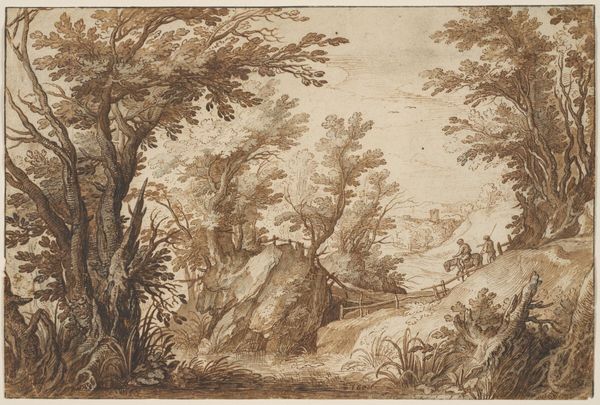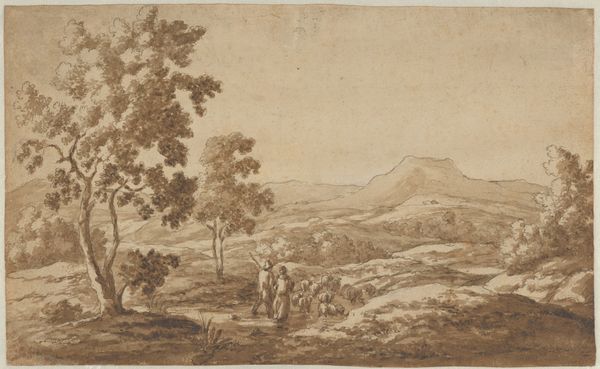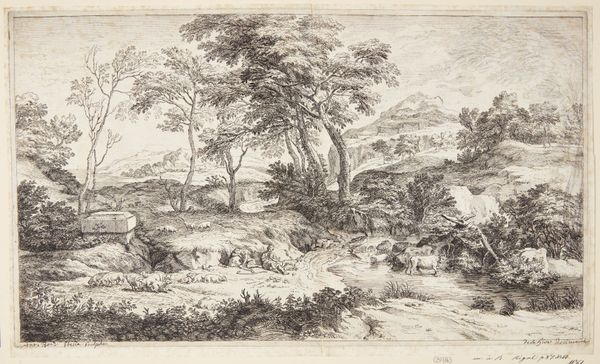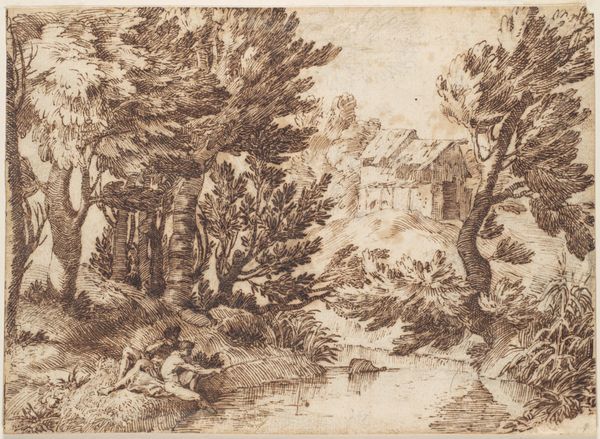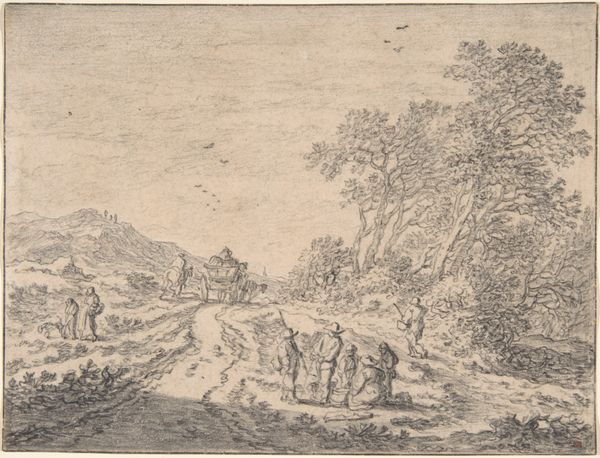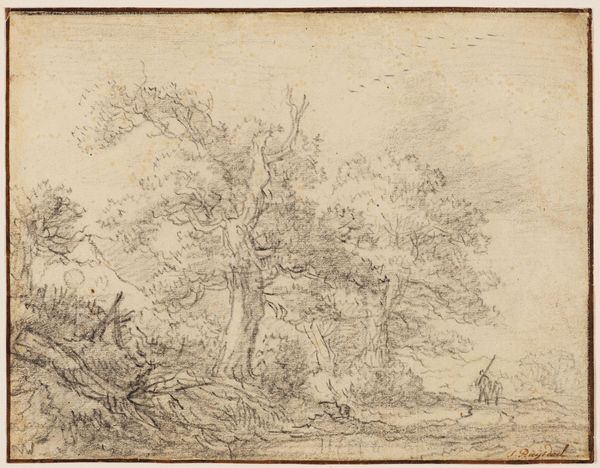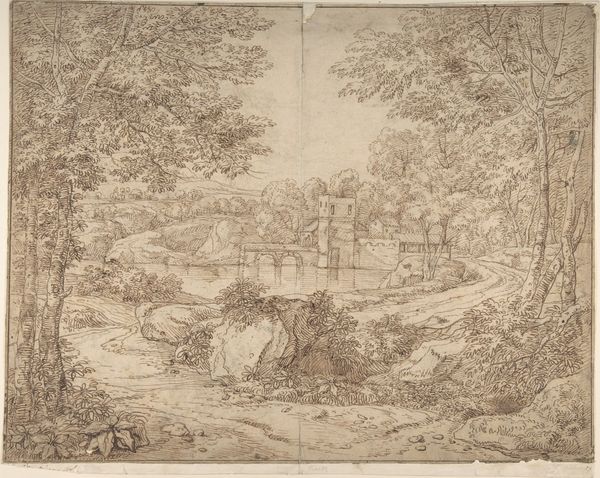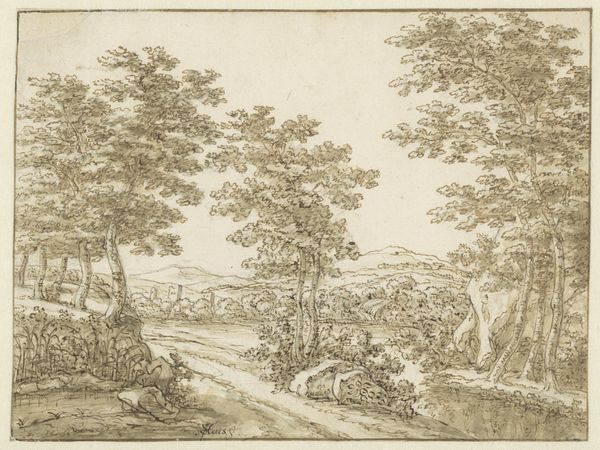
Wooded Landscape with a River, Castle, and Town Beyond 1600 - 1620
0:00
0:00
drawing, print, etching, pencil
#
drawing
# print
#
etching
#
landscape
#
etching
#
pencil drawing
#
pencil
#
cityscape
#
northern-renaissance
Dimensions: 9 7/16 x 13 15/16 in. (24 x 35.4 cm)
Copyright: Public Domain
Curator: Let’s take a closer look at "Wooded Landscape with a River, Castle, and Town Beyond" by Denijs van Alsloot. It’s an etching, pencil, and print work dating back to the early 17th century. Editor: It's amazing! The sheer detail in the foliage is stunning, though the composition is surprisingly neutral in its tonality, evoking a tranquil but subdued atmosphere. I feel a quiet yearning for some deeper narrative, you know? Curator: It’s interesting you say that. These landscapes, common in the Northern Renaissance, weren't just about pretty scenery. They often served political purposes, portraying an idealized vision of the ruler's domain and their power over the land. Think of the land itself as a form of propaganda. Editor: Ah, a spatial reflection of political power! So this idyllic rendering of nature conveniently omits the peasant’s struggles, or any disruption to the established social order. The absence becomes a kind of presence, right? We're essentially seeing a carefully curated display of dominion. Curator: Precisely. Consider how cities and landscapes were depicted in paintings commissioned by wealthy patrons—it's about legitimizing their position, framing it as inherently part of a harmonious, divinely ordained order. These artworks offer not just aesthetic pleasure, but also historical clues regarding power structures. Editor: I see it. This image can almost function like a map for societal values during the era, displaying power not in a triumphant mode, but a calm, idyllic assurance that "all is as it should be." Curator: Exactly. The very act of rendering a scene this way serves to reinforce the prevailing ideologies. Even something that looks pastoral speaks to the power dynamics. Editor: Thank you for reframing my perspective. It allows me to look beyond what's obviously pictured, towards considering those subtle indications of influence woven directly into its imagery. Curator: It's my pleasure; art allows a journey through political thought, captured within line, ink, and form.
Comments
No comments
Be the first to comment and join the conversation on the ultimate creative platform.
